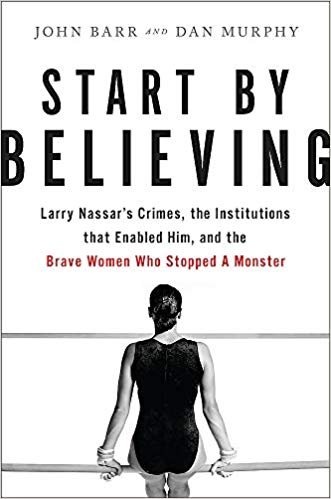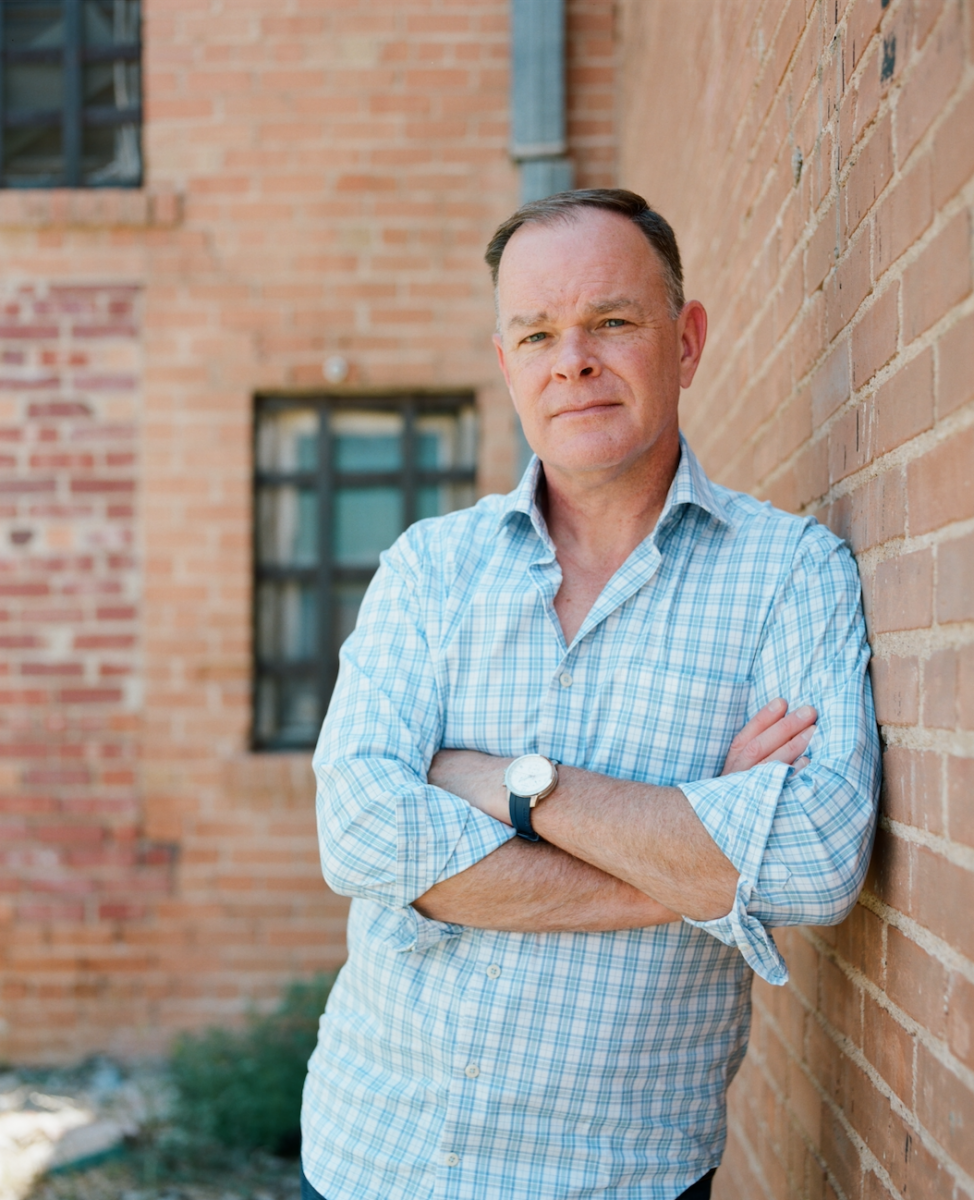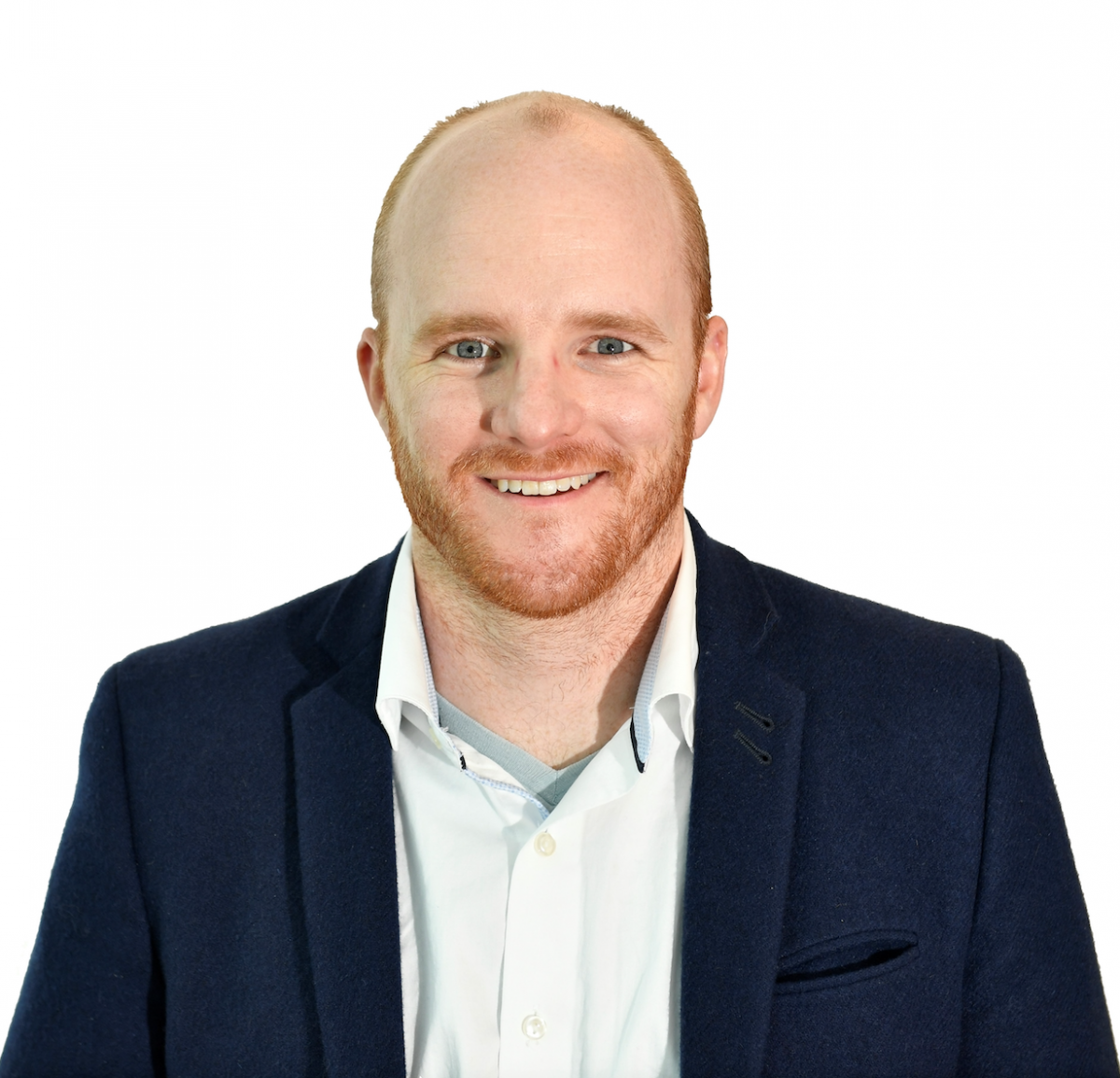In the just-released, Start by Believing, Peabody Award-winning investigative journalists John Barr and Dan Murphy take a deep-dive into the largest sexual abuse scandal in American sports history, perpetrated by Olympic gymnastics doctor Larry Nassar. We sat down with the authors to learn more about what they discovered in their two-and-a-half years of investigation into the case.
As you discuss in the book, it is the many layers of institutional and individual failures that, time and again, enable serial perpetrators such as Nassar. What about this story was universal and what was unique?

Dan: “There were many things that we found these women and girls endured that we later learned were common experiences for survivors of sexual assault. The imbalanced power dynamic that made many survivors harbor a fear of speaking up when they felt uncomfortable (and then many others afraid to believe them or act when some did speak up) may not be universal, but is certainly a common occurrence in these cases, especially in the sports world. The revictimization and added trauma of being doubted or cast aside after speaking up was another universal element.
The scope and magnitude of Nassar’s crimes made this case unique. We often hear that perpetrators of assault are close to their victims and work hard to earn their trust. Nassar was uniquely adept at making hundreds of girls and their families believe he was their best friend and a genuinely caring guy in their corner. The number of women he assaulted was, of course, larger because others failed to stop him. The prominent position he held gave him a unique cover story and provided major institutions with reasons to hesitate or doubt claims made about him when they came to light.”
John: “I would add that Nassar capitalized on his environment. In many ways, it was the perfect storm. So much of Nassar’s story stems from the fact that he preyed on girls and young women in an abusive culture, in gyms where coaches ruled through fear and intimidation. It was in that dysfunctional setting that he exploited that power dynamic and positioned himself as ‘the good guy’—sneaking food to gymnasts who were body shamed and deprived of food or consoling gymnasts who were at their breaking points due to emotionally-abusive coaches. This story was as much about the culture of gymnastics as it was a story of sexual assault and that’s what made it unique.”
For many survivors, the experience of sexual abuse makes it hard to trust again. In cases of child sexual abuse, abuse by a medical professional, or by someone else who a survivor believed had their health and safety in mind, this betrayal of trust can be shattering. What needs to happen in the medical field to ensure this type of abuse will never happen again?
Dan: “We spoke to several survivors who told us that, years or decades after their encounter with Nassar, they find it impossible or very traumatic to be treated by a male physician. Unfortunately, it’s hard to see a simple way to fully eradicate the danger of someone else in the medical field doing something similar. There are some measures that can help and that were put in place—but ignored—for Nassar. There should always be a chaperone or another medical provider in the exam room when a doctor is working on or near a part of the body that might give rise to the possibility of sexual abuse. The doctor should always fully explain what he or she is planning to do to a patient and gain their consent before doing it. While practices or hospitals can improve on how they enforce some of these things, it’s also helpful for patients to understand what explanation they deserve from a doctor and to feel comfortable asking questions and raising concerns about their treatment.”
John: “In hundreds of cases, Larry Nassar sexually assaulted minors and he did so in the majority of those cases when neither a parent nor an adult chaperone was present. Fortunately, USA Gymnastics and the U.S. Center for SafeSport have since then adopted much stricter guidelines. Under the new guidelines, an adult cannot massage a minor athlete unless the adult providing that massage is in a setting that is observable and interruptible by another adult. Some advocates fear these guidelines don’t go far enough. It’s only recommended, for example, that parents provide written permission in order for an adult to provide a massage to a minor. The important take-away here is that parents need to ask questions and have a clear understanding not only of who is coaching their kids, but also treating their kids in the event they are injured, and those treatment sessions have to occur in settings where there is some sort of oversight from another adult.”

Photo credit: Greg Kubik
During your interviews with survivors throughout the process of writing this book, what did they most commonly mention as reasons for why they didn’t feel they could talk about the abuse? What obstacles did they face in getting justice?
Dan: “Three common answers worth highlighting are: Many survivors didn’t think anyone would take their claims seriously. Many were afraid that speaking up could derail their athletic dreams and earn them the label of a troublemaker, hurting their chances at advancing in their sport. Many were groomed to believe Nassar was an expert and a friend. Those girls and women thought for years that he was performing legitimate medical treatments and sadly came to believe that any ‘dirty’ thoughts, reactions or feeling about how Nassar touched them were their fault as opposed to Nassar’s fault.”
John: “I would add that one survivor in particular, a mother of a toddler daughter, was at first quite reluctant to speak with us because she didn’t want to have her daughter Google her name one day only to find out that her mom was sexually assaulted by Larry Nassar. But that first sentencing hearing in Lansing, Michigan, changed everything. When 156 survivors and family members made searing victim-impact statements, confronting Nassar face-to-face in court, it helped to change perceptions of sexual assault survivors. It was a moment of empowerment. It was after that sentencing hearing that this particular survivor decided to use her name and she is now a vocal advocate for child sex abuse victims. The point is that the more the stigma of sexual assault is removed the more comfortable people will be speaking out about it. It is our hope that this book, in some small way, moves that conversation forward so people feel more comfortable talking about these issues.”
One of the many heartbreaking parts of this story is to imagine how the parents of the athletes who endured this abuse must feel. What have you learned about how parents can look out for warning signs and be there to support their children if something does happen?
Dan: “Interviewing parents of some of the survivors were among the most gut-wrenching moments for us as we reported for the book. Those parents were groomed as effectively as their daughters were groomed. One piece of advice that came up in our reporting is to find a way to get comfortable having frank, straightforward discussions with your children about their bodies and appropriate touching. Nassar, at times, hid in the ambiguity of language. When a girl told her parents that the doctor touched her oddly ‘down there’ or ‘near her privates,’ Nassar was able to explain this away by using medical jargon to say he was working in that part of the body, but wasn’t actually assaulting or penetrating his patients.”
What do journalists and reporters need to know about trauma-informed interviewing techniques? In your work, how do you balance thorough reporting with ensuring that you are sensitive to survivors?
Dan: “One of the best things we did early on in reporting this story was seek advice from great organizations such as RAINN to make sure we were handling interviews in ways that would cause no additional harm. There are terrific resources available for reporters about what language to use and how to handle these stories responsibly. We also found it was helpful to spend a little more time explaining what we wanted to learn from each interviewee and why. We tried to make sure we started interviews by telling women that we were there to tell their story and that they were in control of how much they felt comfortable sharing. We also made sure to tell them that we appreciated their trust in allowing us to take their stories and share them with the public.

Photo credit: Jason Potterton
Finally, most sympathetic humans will feel an urge to comfort or befriend or advocate for someone revealing such a traumatic event from their life. While that’s fine to an extent, keep in mind that sometimes you are best-equipped to help serve justice and truth by gathering facts and telling an objective, fair, and accurate story.”
John: “I would add that very early on in our reporting for this book we sought the advice of Keri Potts, one of our colleagues at ESPN. Keri is an executive in our communications department. She also happens to be a survivor of an assault and attempted rape, which occurred while she was traveling overseas. Keri has been quite outspoken about her story. It was Keri who initially helped us understand, for example, that sexual assault survivors often have sensory-based memories, rather than linear memories. Survivors may not recall specific dates and timelines but may recall the color of the room in which their assault occurred or perhaps a smell. Keri was also of great help with respect to language. Through Keri’s help and the help of RAINN and others, we were able to write about sexual assault, we hope, in a way that was sensitive and with an eye on how it would be received by survivors.”
What would you tell all those who read this book and think, “I want to help, I want to be part of the solution?”
Dan: “There are so many different ways to help. One thing I learned in reporting this book is to stick to your strengths in offering help. If you’re not a trained counselor, psychiatrist, or investigator: don’t try to be one. Trying to help without proper training can do more harm than good. Instead, help survivors find those resources and help support the professionals who do that work. Most importantly, we found that many survivors want most of all to be heard, to have their pain acknowledged, and to have someone stand beside them to help carry the weight of that trauma in whatever small way they can.”
John: “I think perhaps the best take-away can be found in the main title of our book. As a society, we need to START BY BELIEVING people when they make the courageous decision to reveal sexual abuse. If we want survivors to begin the healing progress as early as possible and to ultimately reach better outcomes, it all starts there.”
Note: All bolding throughout this interview was added by RAINN.